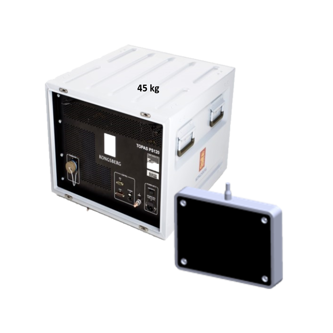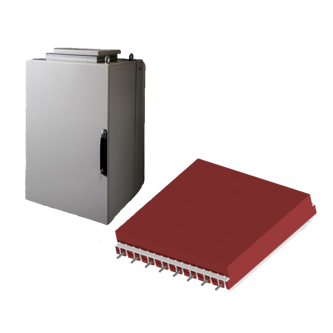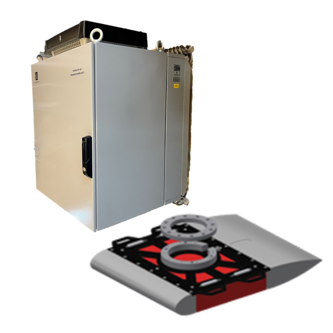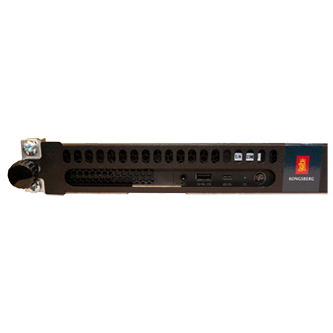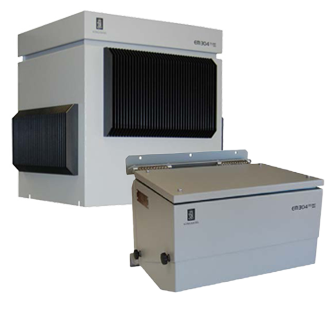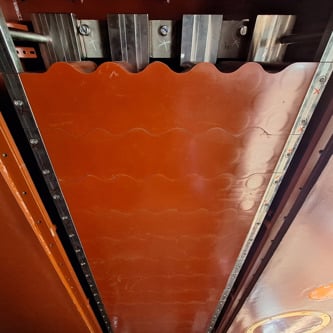
SBP29
Multibeam sub-bottom profiler
High performance sub-bottom profiling system with unique opportunities for getting the most out of the sub-bottom technology.
Concept
SBP29 provides sub-bottom profiling as an optional extension to the EM 124 or EM 304 multibeam echo sounder systems. It applies a dedicated SBP29 array for transmitting narrow beam sub-bottom signals in the frequency range from 2 to 9 kHz. The echoes are received using the EM 124 or EM 304 receiver unit. The array geometry is the same as used by the EM multibeam echo sounders, providing narrow beam footprints. Due to the TX/RX geometry – the mills-cross geometry - the SBP29 sometimes is referred to as a multibeam sediment profiler. A fan of receiving beams is formed across-track, and the system can observe up to 21 beams across for every ping. In addition, the TX beam can be cyclically tilted along-track from ping to ping. This gives the SBP29 some quite unique features – especially when it comes to slope robustness.
Configurations
SBP29 comes in 3-, 6- and 12-degree configuration, where 3, 6, and 12 refers to the transmit beam width. The 3-degree system is the largest, with 96 transmit transducer elements.
SBP27 is the configuration that operates with the older versions of the multibeam systems, EM122 and EM302. The SBP27 operating frequency is 2-7 kHz. Otherwise, its functionality and configuration options are the same as for SBP29.
Slope robustness and composite echogram
Sloping seabed and sloping subsurface features may result in loss of sub-bottom return signals, especially with very narrow beams.
SBP29 with its multiple beams across for each ping, and with its option for cycling the transmit beam provides unique slope robustness. SBP29 can be configurd to make several narrow beam echograms with different TX/RX pointing angles, increasing the likelihood of normal incident to all slope directions in the sub-surface layers. In addition, the beam width can be cyclically changed between each ping, allowing for both narrow and wide beam data.
The composite echogram is a unique SBP29 features that helps you pick the best from each of the many available echograms. The composite echogram is one single echogram consisting of individual traces picked from all available observations with the best signal-to-noise ratio.
Key features
- Source level @4 kHz: 228 dB for a 3° system
- Frequency range: 2-9 kHz
- Beam width: 3°, 6° or 12°
- Operational depths: <10- 10000 m
- Up to 21 beams across per ping
- Cycling transmit tilt angle, beam width and pulse options
- Composite echogram
Product range
How can we help?
If you are experiencing any issues or have technical questions regarding your equipment, please don't hesitate to reach out. Our dedicated hydrographic support team is here to assist you with any challenges you may encounter.
Related products
We offer comprehensive after-sales assistance
-
24/7 Technical support
Our Technical Support team is readily available to provide global 24/7 support and can respond to resolve any issues at any time, wherever you are located in the world.
-
Training
We can provide detailed training on the use of our products to ensure your crew is equipped with the necessary operational competence to minimise technical risk and maximise return on your asset investment.
